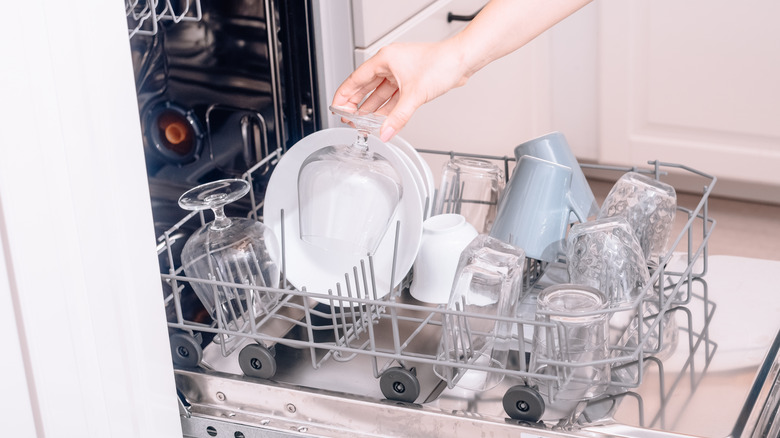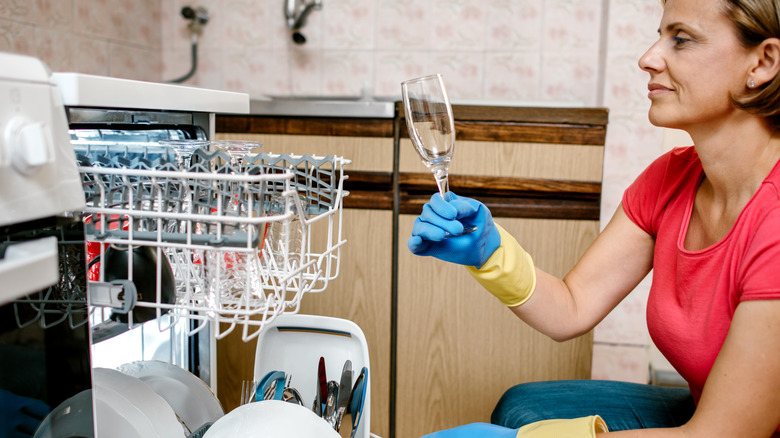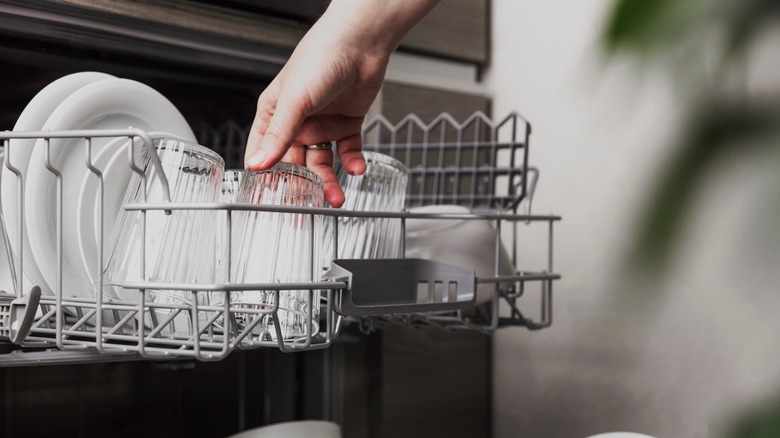Why It's Essential To Remove Broken Glass From The Bottom Of Your Dishwasher
The high-pitched ring of shattered glass is not the sound you want to hear emanating from your dishwasher. At that moment, one question will echo through your mind — should I let it keep spinning or stop it now? The quick answer is — Stop it! Though it may seem like a good idea to let the dishwasher's drain take care of the majority of the cleanup, such a decision could cost you a lot in the long run.
When glass breaks inside the machine, a couple of things could happen if it continues to wash: large shards will damage other dishes on the rack or the appliance itself as they get tossed around, and small shards will get sucked into the drain pump, drain line, or the motor, so it's best to stop the machine and assess.
If broken glass perforates the pump or blocks the drain, you're stuck with a leaking dishwasher at best. At worst, other parts of the machine will get damaged by the excess water, including the motor. Whether it's damaged by water or glass shards, the motor is almost always the most expensive part to repair or it could even need replacing.
How to safely remove broken glass from a dishwasher
Once the dishwasher is powered off, you'll need to begin the careful process of removing the glass. Leather work gloves make for a great protectant against accidental cuts and pokes, or you can slip on an oven mitt or another type of sturdy handwear. Remove the broken item and any large pieces of glass you can easily reach before unloading the other dishes. You'll want to wipe down each dish with a towel, perhaps over the trash can, to make sure any splinters are caught.
Once the dishwasher is empty, remove the racks and grab a flashlight so you can inspect the bottom of the interior. Small glass shards will likely be lingering down there, and you have a few options for removing them. There's the potato trick, of course. You'll also get similar results with a slice of bread, a wet paper towel, or tape; simply press your item of choice gently down on the glass for easy pick up. A wet vacuum does wonders, as well. With the racks removed, you'll also want to empty the drain basket and remove and rinse the filter. Once you're satisfied that all the glass is gone, run the empty dishwasher through a cycle. This ensures any tiny flecks of glass get washed away.
Why glass is breaking in your dishwasher
You can avoid repeating this process by taking a few precautions when placing delicate glass inside your dishwasher. First, check the dishwasher settings for a delicate option. Most cycles run at a high heat, which can often serve as a catalyst for breakage. Glass expands and contracts under hot and cold temperatures. A glass that suddenly goes from being cool to being heated by steamy water will experience thermal shock. If that shock is great enough, it'll cause the glass to break. Delicate cycles use a lower temperature and less water pressure.
Unless it's a heavy pan or bowl, all glass should be placed on the top rack to avoid the high pressure of the bottom spinner. Make sure none of the glass is touching, too, and that it is resting firmly in place. You want the glass to avoid movement as much as possible. Glass that is particularly thin should be washed by hand to be safe.


